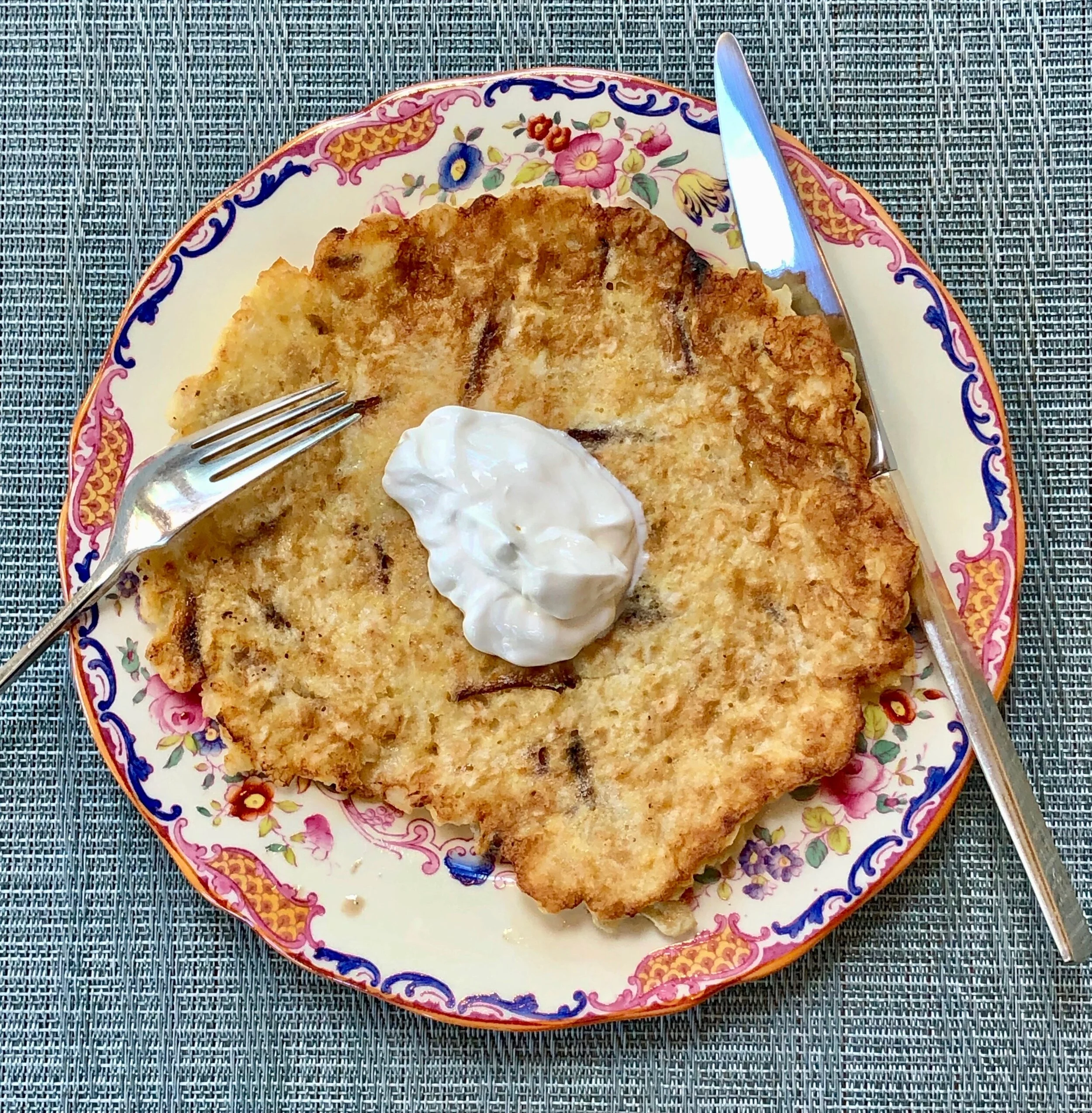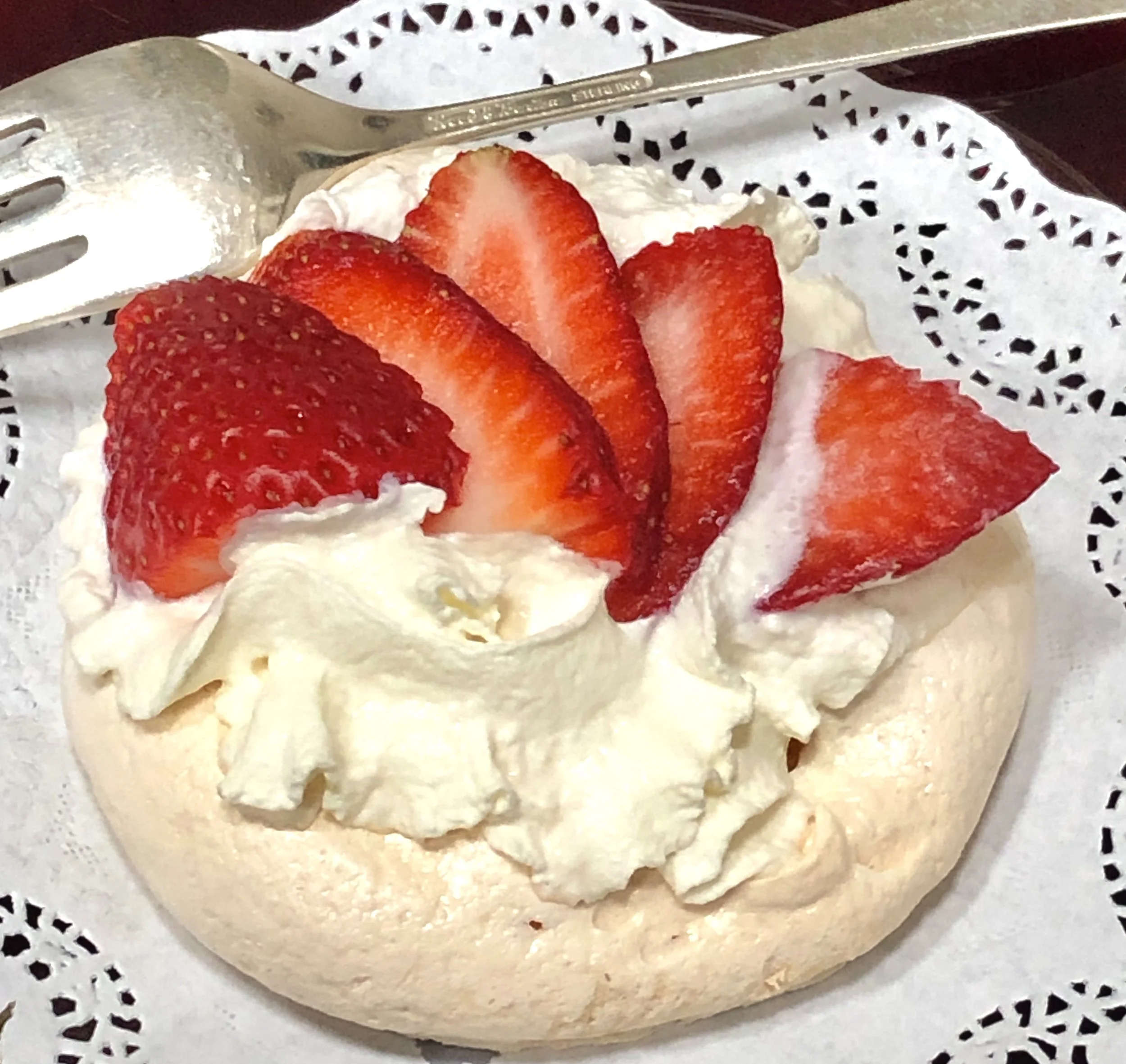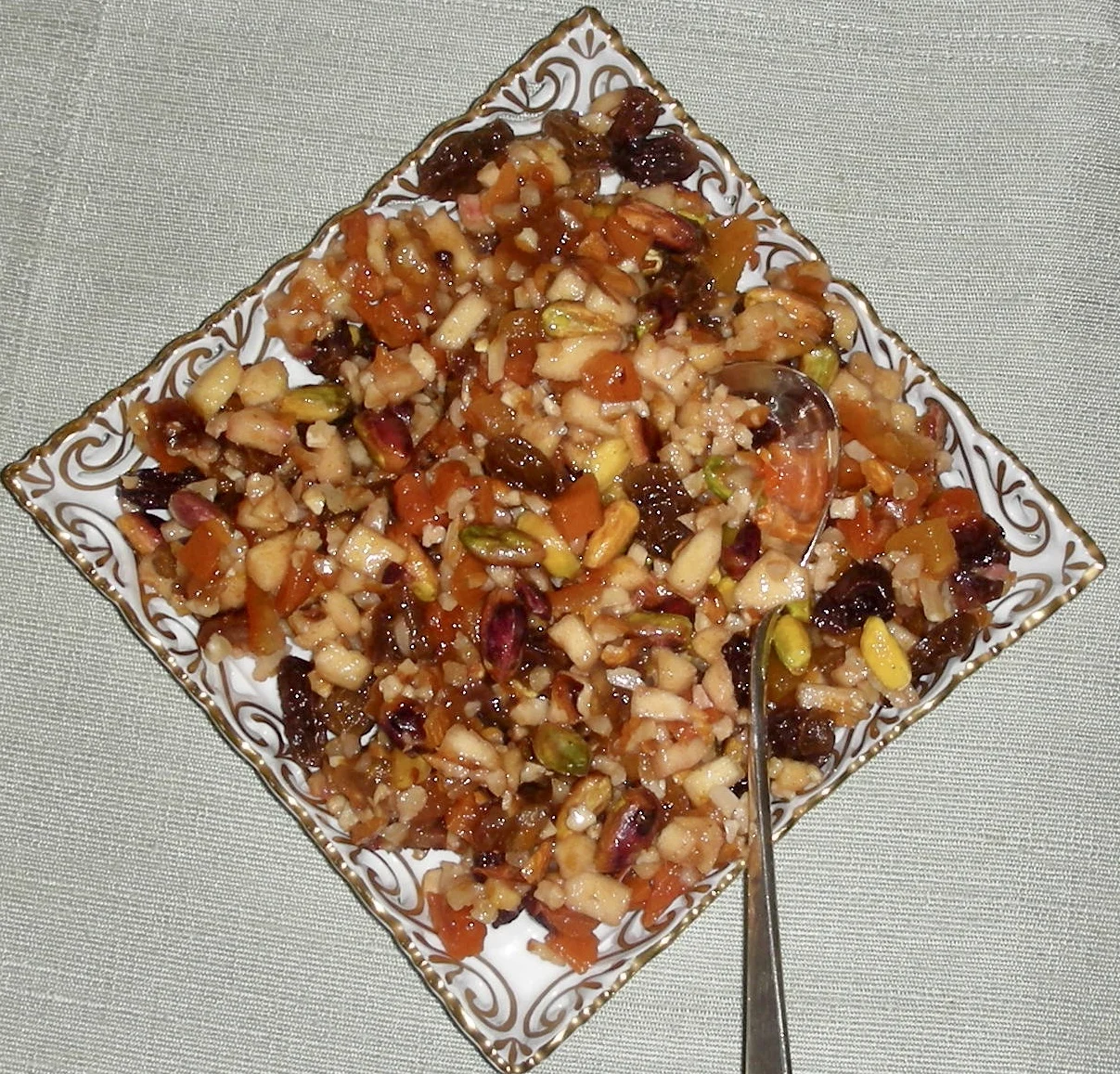Once I had a meringue race with a KitchenAid mixer and I WON! I was teaching a class and we were making Pavlovas. I used a big copper bowl and balloon whisk. The KitchenAid mixer had a stainless steel bowl and whisk attachment plus 10 speeds.
Now, I am NOT saying it was worth the effort. Just because I CAN do something doesn’t mean I want to. I wouldn’t ever want to be without my standing mixer. And I always make meringues in the stainless steel bowl (there is a copper bowl attachment but I never bought one).
Just thought I’d mention it. Ahem.
Pavlovas, which are hard meringue shells filled with fruit, lavished with sauce and topped with whipped cream, are sugary sweet and you can do a lot with them. And they’re so easy to make. They’re also a good dessert for Passover because there’s no flour and stuff we can’t eat during the holiday.
They are named after a famous Russian ballet dancer named Anna Pavlova (1881-1931). Food historians say that a hotel chef in either Australia or New Zealand named the dessert after her visit there in 1926. The white meringue shell is said to mimic her tutu and in the original recipe, the shells were filled with kiwi fruit, in imitation of the cabbage rose decorations on her outfit.
Anyway, Pavlova meringues are quick enough to put together and they are perfect containers for springtime’s wonderful profusion of berries and other fruit. I usually use strawberries and kiwi, but any soft fruit will do.
Pavolvas
Meringue Shells:
4 large egg whites at room temperature
1 tablespoon lemon juice
1/4 teaspoon salt
1 cup sugar
3/4 teaspoon vanilla extract
Preheat the oven to 275 degrees. Beat the egg whites in the bowl of an electric mixer with whisk attachment set at medium speed until the mixture is foamy. Add the lemon juice and salt and beat, gradually increasing the speed, until soft peaks form. Gradually add the sugar and continue to beat, gradually increasing the speed to high, until the mixture stands in stiff, glossy peaks. Stir in the vanilla extract. Line a cookie sheet with parchment paper. Spread 6 equal amounts of the meringue mixture onto the sheet. Flatten the mounds with the back of a large spoon, leaving the edges slightly higher. Bake for 45 minutes. Reduce the oven heat to 250 degrees. Bake for another 15 minutes. Remove the cookie sheet to a cake rack to cool. Gently release the meringues from the parchment. Makes 6
Filling and Sauce:
2 cups raspberries
1 tablespoon brandy or orange juice
1 tablespoon sugar
1 cup whipping cream
1-1/2 to 2 cups cut up strawberries and/or kiwi fruit, bananas, mango, papaya, blueberries, etc.
mint leaves
Place the raspberries, the brandy and all but one teaspoon of the sugar into a food processor and puree the ingredients. Set aside. Whip the cream with the remaining one teaspoon sugar until it is thick. Spoon the raspberry sauce onto 6 dessert plates. Place the meringue shells on top. Fill the shells with the cut up fruit. Top with the whipped cream. Garnish with mint leaves. Makes 6 servings







